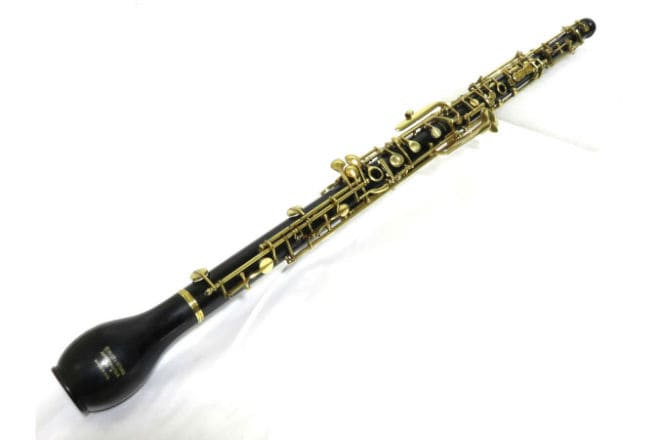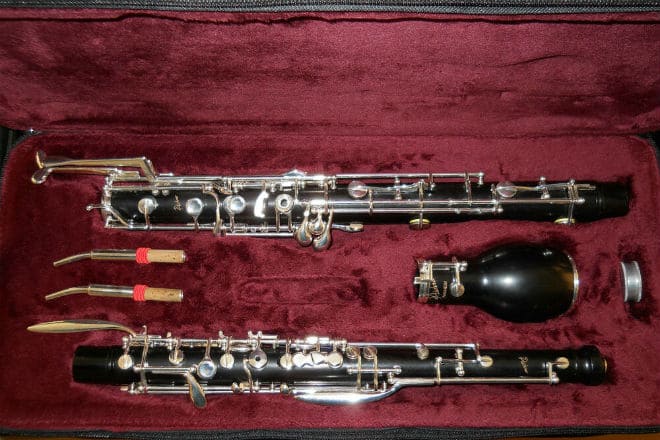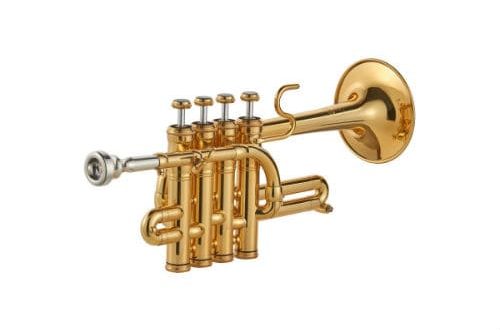
English horn: what is it, composition, sound, application
The melodiousness, reminiscent of shepherd’s tunes, is characteristic of the English horn woodwind instrument, the origin of which is still associated with many mysteries. In the symphony orchestra, his participation is small. But it is through the sound of this musical instrument that composers achieve bright colors, romantic accents, and beautiful variations.
What is an English horn
This wind instrument is an improved version of the oboe. The English horn reminds of its famous relative with a completely identical fingering. The main differences are the larger size and sound. The elongated body allows the alto oboe to sound a fifth lower. The sound is soft, thick with a full timbre.

Transpose tool. When playing, the pitch of his real sounds does not match the notated one. For most people, this feature means nothing. But listeners with absolute pitch can easily recognize the participation of an alto oboe in a symphony orchestra. Transposition is a distinctive feature not only of the English horn, the alto flute, clarinet, musette have the same feature.
Устройство
The tool tube is made of wood. It differs from its “relative” in a rounded pear-shaped bell. The extraction of sound occurs by blowing air through the metal “es” that holds the reed. There are a certain number of holes on the body and a valve system is attached.
Build a fifth lower than that of the oboe. The sound range is insignificant – from the note “mi” of a small octave to the note “si-flat” of the second. In the scores, the music for the alto oboe is written in the treble clef. The instrument is characterized by low technical mobility, which is compensated by the cantileverness, length, and velvety of sounds.

History of the alto oboe
The English horn was created at the beginning of the XNUMXth century on the territory of modern Poland or Germany, earlier these lands were called Silesia. Sources point to different versions of its origin. According to one, it was created by the Silesian master Weigel and the alto oboe was made in the form of an arc. Other sources state that the creation belongs to the German instrumental inventor Eichentopf. He took the oboe as a basis, improving its sound with the help of a rounded bell and lengthening the channel. The master was surprised by the pleasant, soft sound that the instrument made. He decided that such music was worthy of angels and called it Engels Horn. Consonance with the word “English” gave the name to the horn, which has nothing to do with England.
Application in music
The alto oboe is one of the few transposing instruments entrusted with the solo part in musical works. But he did not immediately achieve such authority. In the early years, it was played from scores for other wind instruments similar to it. Gluck and Haydn were innovators in the promotion of the cor anglais, followed by other composers of the eighteenth century. In the XNUMXth century, he became very popular with Italian opera composers.

In symphonic music, the alto oboe is used not only to create special effects, lyrical parts, pastoral or melancholic digressions, but also as an independent member of the orchestra. Horn solos were written by Rachmaninov, Janacek, Rodrigo.
Despite the fact that exclusively solo literature for this instrument is not numerous, and it is very rare to hear an individual concert performance on the alto oboe, it has become a real gem of symphonic music, a worthy representative of the family of woodwind reed instruments, capable of conveying bright, characteristic intonations conceived by the composer.





